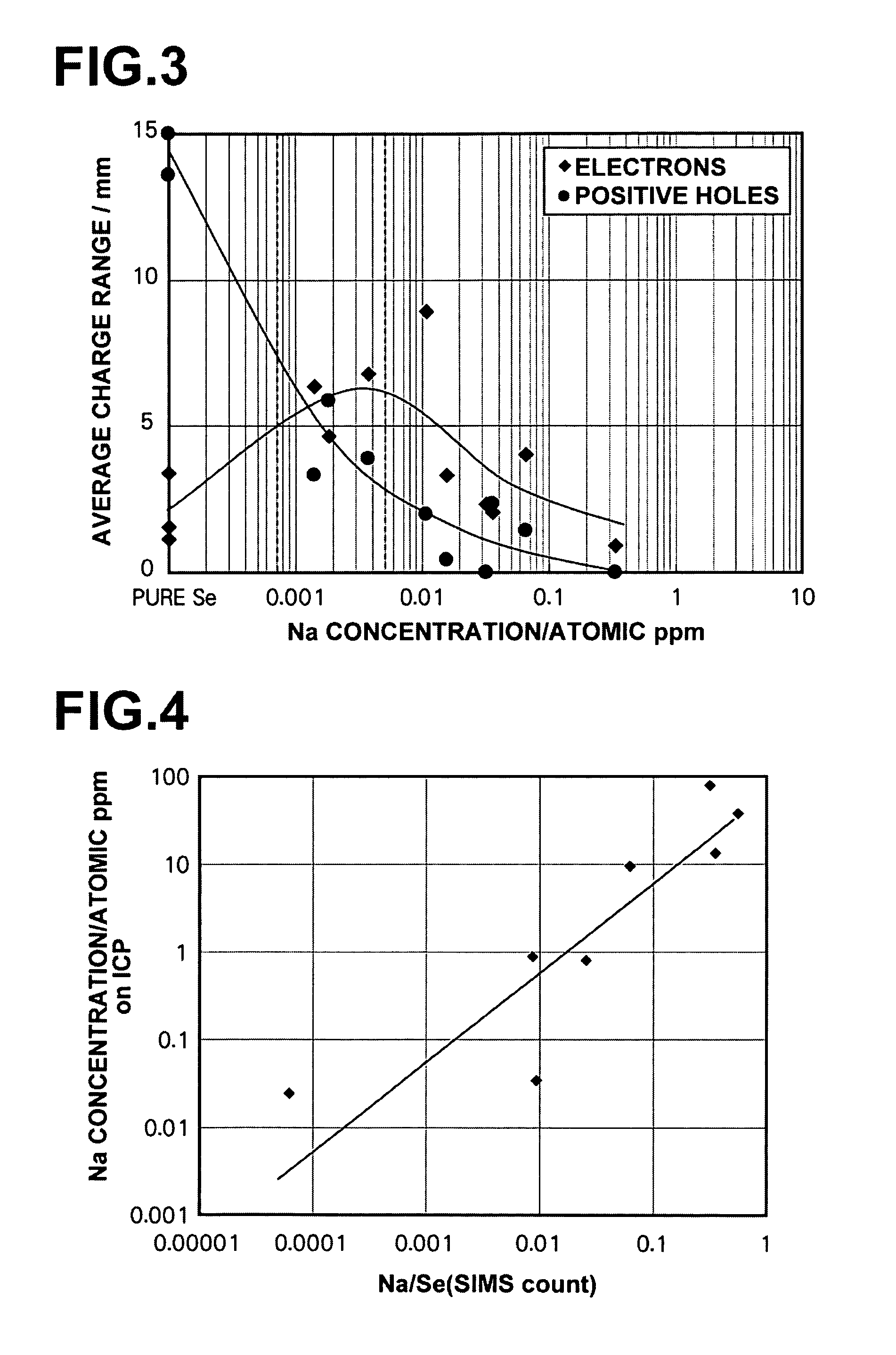Radiation detector
a detector and radiation technology, applied in the field of radiation detectors, can solve problems such as deterioration of sensitivity, and achieve the effects of improving electron transport properties, high electron transport properties, and greatly improving positive hole transport properties
- Summary
- Abstract
- Description
- Claims
- Application Information
AI Technical Summary
Benefits of technology
Problems solved by technology
Method used
Image
Examples
first embodiment
[0034]Hereinafter, a radiation detector that employs the optical readout method will be described. FIG. 1 is a sectional diagram that illustrates the schematic construction of a radiation detector 10 according to the present invention.
[0035]The radiation detector 10 comprises: an upper electrode 1 which is transmissive with respect to recording radiation; a recording photoconductive layer 2 that exhibits conductivity when irradiated by the radiation transmitted through the upper electrode 1; a charge accumulating layer 3 that functions substantially as an insulator with respect to charges which are charged at the upper electrode 1 (latent image polarity charges: negative electric charges, for example) and functions substantially as a conductor with respect to electric charges of the opposite polarity (transport polarity charges: in the case described above, positive electric charges); a readout photoconductive layer 4 that exhibits conductivity when irradiated by readout light; and ...
second embodiment
[0055]FIG. 9 is a schematic sectional view that illustrates the structure of a radiation detector according to the present invention. In FIG. 9, elements which are the same as those illustrated in FIG. 1 are denoted with the same reference numerals, and detailed descriptions thereof will be omitted insofar as they are not particularly necessary. In the radiation detector 10 illustrated in FIG. 9, a layer 15 (hereinafter, referred to as “adjacent layer 15”) formed by amorphous selenium, having a thickness within a range from 0.2 μm to 2 μm and containing As within a range from 2 atomic % to 14 atomic %, is provided adjacent to the recording photoconductive layer 2 at one side thereof. Crystal cores are likely to be generated particularly at the interface of the recording photoconductive layer 2 at which the adjacent layer 15 is positioned. This is due to various factors, such as: amorphous layers are likely to be unstable at interfaces from a free energy viewpoint; the possibility th...
PUM
| Property | Measurement | Unit |
|---|---|---|
| thickness | aaaaa | aaaaa |
| thickness | aaaaa | aaaaa |
| thickness | aaaaa | aaaaa |
Abstract
Description
Claims
Application Information
 Login to View More
Login to View More - R&D
- Intellectual Property
- Life Sciences
- Materials
- Tech Scout
- Unparalleled Data Quality
- Higher Quality Content
- 60% Fewer Hallucinations
Browse by: Latest US Patents, China's latest patents, Technical Efficacy Thesaurus, Application Domain, Technology Topic, Popular Technical Reports.
© 2025 PatSnap. All rights reserved.Legal|Privacy policy|Modern Slavery Act Transparency Statement|Sitemap|About US| Contact US: help@patsnap.com



